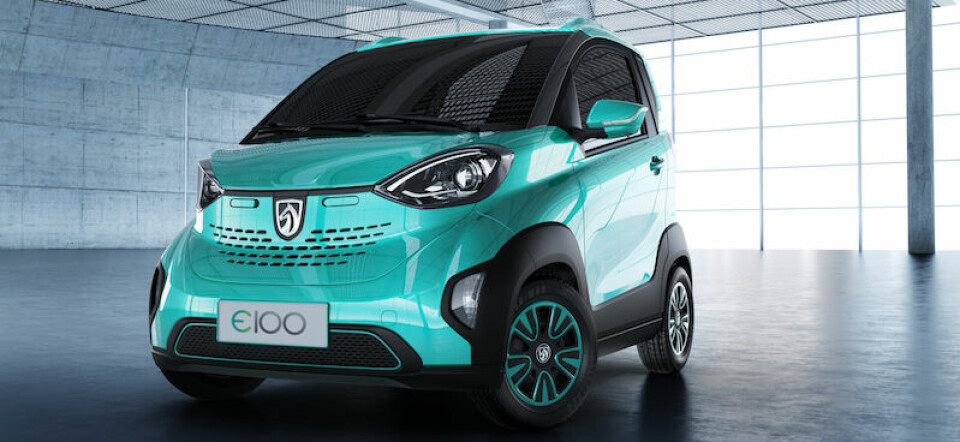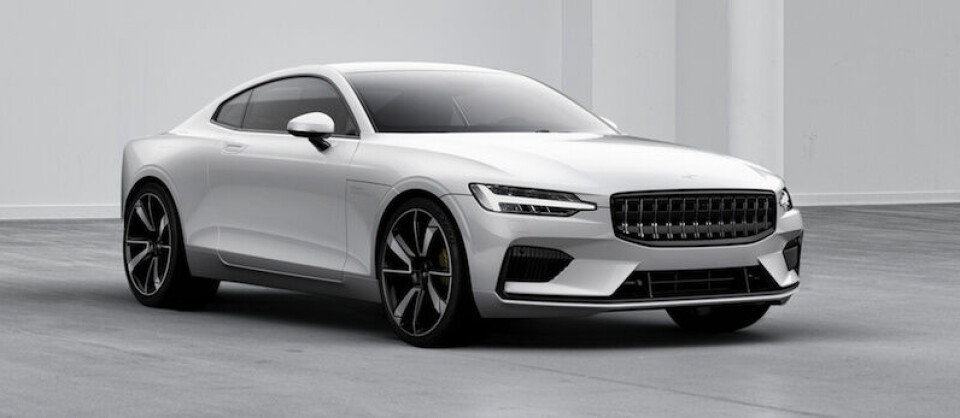China charges ahead
A new government scheme could have a big impact on China’s new energy vehicle market – already the largest in the world

The Chinese government has decided that it would like its car market, the world’s largest, to switch to electric – and this is has really shaken up OEM product plans. The market is already the biggest for electrified cars and light trucks; according to the China Association of Automobile Manufacturers (CAAM), the production and sales of new energy vehicles (NEVs) reached 794,000 units and 777,000 units respectively during 2017. This marks a considerable increase of 53.8% and 53.3% year on year.
But the authorities are still not happy with the current rate of uptake, and think that a rapid switch to electric vehicles (EVs) will help cities to clean up their notoriously dirty air while also reducing the country’s reliance on imported oil. To that end, the Chinese government has changed the way it incentivises EVs.
In September, it announced a new quota which forces manufacturers to ensure that 10% of sales are EVs by 2019, rising to 12% a year later. The rule replaces a flawed subsidy scheme and works on a system of credits, the amount of which varies depending on range and performance for each NEV sold. Not enough credits and the company will pay a fine equal to $3,500 for every conventional vehicle sold.
Spreading the riskChina has already used the carrot and stick approach before, with cities like Beijing and Shenzhen restricting sales of vehicles that use conventional engines in favour of EVs. But the quota system is a radical new gambit that virtually dictates what vehicles manufacturers should put down the production line.
China wants sales of EVs to account for around 20% of all vehicles sold in 2025, rising to around 50% in 2030. Manufacturers are hurriedly developing cars to meet the targets, and some are shaking up their joint venture (JV) relationships in the process.
Ford, for example, recently looked past its existing JV partner Changan in favour of a new collaboration with Zotye to make a new line of EVs. Based in Zhejiang province just south of Shanghai, Zotye is more famous for its successful clone of the Porsche Macan SUV. However, its smart car-sized E200 was the sixth most popular EV in China according to October figures quoted by global sales aggregrator Bestsellingcarsblog.com. Ford and Zotye will build a new factory in Zhejiang if approval is granted, and the US OEM estimates that the market for EVs in China will exceed 4m units by 2025.
Meanwhile, Volkswagen (VW) has formed a new partnership with Anhui Jianghuai Automobile Group, also known as JAC, to build EVs, making it the third partnership for the German OEM in China. Plus, BMW is reportedly in the process of signing a JV with Great Wall to build electric Minis, rather than sticking with its current partner, Brilliance.
Other vehicle manufacturers are channelling more development money into their current partnerships to build EVs, such as Renault-Nissan. It has set up the eGT New Energy Automotive Co with Dongfeng to build a small electric SUV for 2019, which will likely be a version of its Kwid small car that started life in India. General Motors (GM) is leveraging its relationship with SAIC to ensure that “almost” all of its cars sold in China will be electrified in some way by 2025, according to CEO Mary Barra.
Those forging new relationships could be making the better bet. “Playing the field is smarter for two reasons,” Michael Dunne, president of China-specialist analyst firm Dunne Automotive, wrote on LinkedIn. Firstly, companies can earn additional electrification credits via these new EV-designated JVs and secondly, they might have better leverage in the new partnerships.
“GM and Nissan seem committed to a one-partner strategy in China, for better or for worse. This bet is fraught with risk because the Chinese partners show no sign of reciprocating the faithfulness,” Dunne added.

Broadening the appealAnything that spreads risk has to be good as OEMs prepare for a rocky ride financially, at least while EVs are still more expensive to build than traditional combustion-engine models. China is encouraging EVs at the expense of automaker profits, the Financial Times argued in December, quoting figures from Bernstein Research. These estimate that OEMs will lose $4,500 per EV in 2020, which is when purchase subsidies are scheduled to disappear.
“Everyone will lose money on EVs for the first several years,” Dunne predicted. “Thousands of dollars per vehicle. Several young start-ups will go bankrupt. China’s unapologetic message is: losses on EVs are the new price of access to the world’s largest vehicle market.”
New electric-focused companies have been lured in by extremely generous subsidies starting in 2009, and Dunne estimates that China will spend a further $60 billion by 2020 to encourage electric car sales, albeit with a bias on longer-range EVs with bigger batteries. The success of cars like the two-seater E100 from Baojun, which is jointly owned by GM and SAIC, has prompted foreign companies to opt for smaller vehicles in order to crack the market. However, the Chinese government wants OEMs to focus on electric cars with a more universal appeal, rather than just city runners.
The subsidies initially created a frenzy as both existing and fledgling vehicle manufacturers scrambled to establish themselves at the birth of a new technology. At the start of 2017, 169 companies were registered makers of NEVs, according to a piece published by South China Morning Post in January. The story focused on a “zombie” EV maker called Suda, which had taken local subsidies to set up a factory in Sanmenxia, Henan Province, in 2010 but had little in the way of sales to show for it six years later.
Suda does have one important advantage: it is one of just 15 new companies awarded licences to produce NEVs by the Chinese National Development and Reform Commission (NDRC) since March 2016. The list also includes VW’s JV with JAC, new companies from established automakers such as Chery and Beijing Automotive (BAIC), and several far lesser known brands such as Suda and NEVS – the group that bought the SAAB assets, but not the name, from GM.
Those already building electric cars, such as BYD, the market leader, and BAIC, whose EC-series city car topped the new-energy charts in October 2017, will continue to be able to build as before. However, the lack of a licence for prominent electric start-ups such as Nio, which revealed its ES8 electric SUV at the end of 2017, and Byton, which is hoping to rival Tesla (see p18-19) and lists former Alpine and Renault experts among its employees, could become an obstacle. Some of the less well-funded companies with a licence could angle for a lucrative partnership.
Local beneficiariesTesla is reportedly in talks to set up one of the first 100% foreign owned factories in a new free-trade zone within China. The major drawback with these zones is that cars built there will still be subject to import tariffs of 25%, gifting the likes of Polestar, Volvo’s new electrified premium brand, a big advantage with its Chengdu manufacturing base. The latter launched last year with a low-volume plug-in hybrid coupe dubbed Polestar 1, and will follow it with an all-electric sedan in 2019.
Tesla’s dilemma is just another example of China’s brazen protectionism. One of the worst when it comes to electric cars is the favoritism towards China’s battery makers. Analyst Roland Berger reports that 90% of electric cars sold in China are powered by batteries from Chinese makers, which is hardly surprising when cars powered by batteries from foreign makers such as Panasonic, LG Chem and Samsung are excluded from China’s generous state subsidies, even when those batteries are made in China.
This has enormous benefits for Chinese makers. Roland Berger predicts that by 2019, BYD and CATL will be third behind Panasonic and LG Chem in terms of battery cell share, with 9% of the global market each. China’s Lishen will be fifth equal with Samsung, while Wanxiang, owner of A123 Systems and Karma Automotive, will be seventh largest, Roland Berger predicts. With OEMs viewing cells as a commodity, this has implications for manufacturer supply. GM, for instance, is reportedly thinking of switching to A123 Systems from its current supplier LG Chem.
Suppliers of other EV-specific hardware are bolstering their capability in China. Canada’s Magna, for example, will partner with Huayu, owned by Shanghai Automotive, to make electric powertrains. As with many fast-paced, state-driven schemes in China, the laws of unintended consequences can help or hinder in unexpected ways. But as ever, vehicle-makers are willing accept the obstacles for continued access to the world’s largest car market.

Starting up in ChinaEV start-ups are launching everywhere in China, but only 15 have the coveted new production licences issued by the government. (Source: Dunne Automotive)
BAIC BJEV EV-making arm of Beijing Automotive Group started in 2009. Already builds a range of EVs, so the licence could be for a new venture.
Changjiang EV Part of FDG Electric Vehicles Limited, which also makes batteries and electric buses. Based in Hangzhou, Zhejiang Province.
Chery NEV Chery is one of the big state-owned vehicle-makers in China and already produces a range of EVs, so this must be for a new venture.
Greenwheel EV This Shezhen outfit already builds electric buses, vans and a couple of EVs, according to its website.
Hozon NEV A new company based in Jiaxing City, Zhejiang Province. It showed an electric SUV concept in 2016 and is readying a factory for 2019, Car News China reported.
JAC VW Group Potentially the biggest. The two firms signed an agreement in June to make EVs and operate a mobility service. The first car is slated to arrive in 2018.
Jinkang NEV Owned by the Chongqing Sokon Industry Group, a specialist in mini vans and the parent company of ambitious EV start-up SF Motors.
JMC New Energy This is the EV-focused arm of Jiangling Motors, based in Nanchang city, Jiangxi Province. It is best known for its light trucks, and will be launched under the name ‘Blade Electric’.
Min’An Auto EV arm of exterior vehicle trim supplier Minth Group, and the first to gain an EV licence.
New Energy Vehicle Sweden (NEVS) The company which bought the assets of Saab from General Motors, but not the name. It has exhibited a concept based on the old Saab 9-3.
Qiantu Backed by Beijing CH-Auto, this start-up has ambitious plans to crack the US market and hopes to launch a supercar first.
Suda EV Based in Sanmenxia, Hunan Province, this company has shown a couple of small EVs but does not seem to have started production, despite setting up in 2010.
Wanxiang Group One of China’s largest automotive suppliers, based in Hangzhou, Zhejiang Province. Owns battery maker A123 Systems and EV brand Karma (formerly Fisker). Builds Karmas in California but not yet in China.
Yudo NEV Yudo is based Putian, South China’s Fujian Province, and launched its electric SUV, the Yudo Pi1, in August 2017.
Zhidou Already one of the biggest makers of EVs, and its small D2 was the second most popular EV in the sales charts late last year. This licence must be for a new venture.


